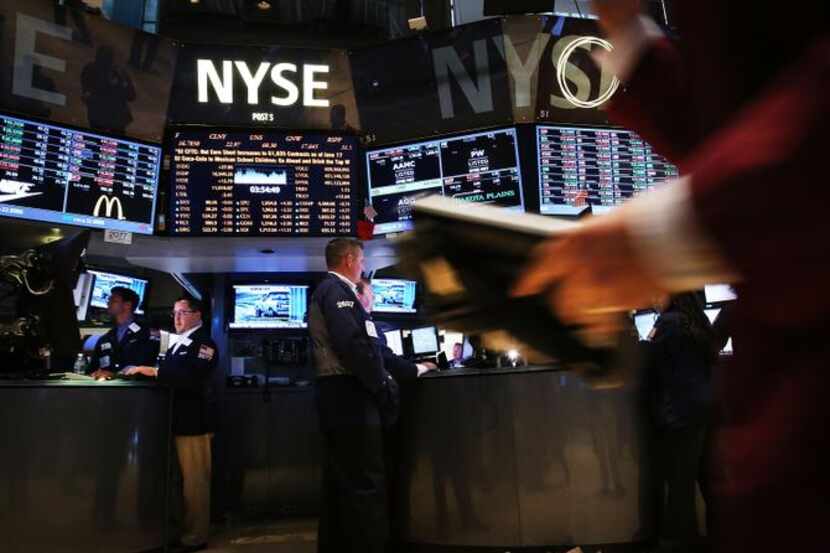Much of what people think moves the stock market doesn’t.
I’m reminded of this every time I see another story in the financial press about the chronically sluggish U.S. economy and the headwind that presupposes for stocks.
While that sounds reasonable enough, it doesn’t contain the commendable merit of being true. There is essentially no correlation between U.S. economic growth and the stock market — nada.
In fact, stock markets around the world actually tend to perform better during periods of slow economic growth. I know that’s counter-intuitive, but a number of studies in recent years confirm this.
For example, Vanguard examined U.S. stock returns back to 1926 to assess the impact of more than a dozen metrics on the market. Researchers looked at such things as stock valuations (price-to-earnings ratios), economic growth, dividend yields and even rainfall to determine if they were predictors of future stock returns.
Economic growth, or gross domestic product (GDP), showed zero correlation, meaning it has no predictive value in determining future stock values.
On the correlation scale where 1.0 represented very strong predictability, GDP came in at 0.0 — the same level as the trailing 12-month stock returns. Rainfall at least came in at 0.06 on the scale.
“Many popular signals [that investors watch] have had a lower correlation with the future return of stocks than rainfall — a metric few would link to Wall Street performance,” the Vanguard researchers said.
The strongest link
The metric with the highest correlation was p/e ratios at 0.43. In other words, one of the best predictors of stock market performance, say, over the next 10 years, is the starting valuation at the beginning of the period — and the lower the better.
“The starting valuation decides just about everything,” said Pat Dorsey, president of Sanibel Captiva Investment Advisors in Chicago. “GDP tells you nothing about what the market will do.”
While searching for some real world examples of this phenomenon, I discovered a report written about a year ago by Jeremy Grantham, co-founder of GMO, a Boston investment firm. He reached the same conclusion as the Vanguard folks.
“I believe theory and practice strongly indicate that lower GDP growth does not directly affect stock returns,” he writes.
By the way, when this gentleman speaks, people listen. His firm manages $106 billion, and his research is so in-depth and thorough it makes my head hurt. Anyway, he said that since 1980 some of the best-performing stock markets in developed countries have had the slowest growing economies.
For example, the stock markets in Sweden and Denmark posted annualized returns of 9 percent and 12 percent respectively even as their economies grew barely above stall speed of around 1.5 percent.
These were far better stock market performances than seen in the United States, Spain, Norway and Australia, all of which had much faster GDP growth rates.
Starting valuations
In this study, Grantham examined only developed economies over the past 30 years. But he states that in his previous work, he looked back 100 years and also at emerging markets. The same correlation held true.
One needs to look no further than China for confirmation of this. The Shanghai Composite Index had only a 3 percent annualized rate of return over the past 10 years even as its economy grew at a torrid pace that at times eclipsed 10 percent.
Conversely, Eurozone economies shrank by 0.5 percent last year and yet the Euro Stoxx 50, an index of Eurozone stocks, rose by almost 20 percent.
“The starting valuation of the Shanghai Index was high while the starting valuation of the Euro Stoxx index was low,” Dorsey said. “Valuation tells you more about future stock returns than anything else.”
Obviously, many factors contribute to stock performance, not the least of which is earnings per share. And while that seems to be related to economic growth, it’s not as much as people think.
That’s because large U.S. corporations, which account for a large chunk of the stock market, have shown they can book hefty profits during periods of lethargic economic growth. Further, companies in the Standard & Poor’s 500 index get 40 percent of their profits from overseas.
Currently, the forward p/e ratio of the S&P 500 Index is about 16, which is about the historical average. This is neither an extremely high starting valuation nor an extremely low valuation, so investors can expect modest annualized stock market gains over the next few years in the 6 percent to 8 percent range, Dorsey said.
“Investors should take note of valuations the next time someone predicts the death of equities simply because of our sluggish economy,” he said.

/cloudfront-us-east-1.images.arcpublishing.com/dmn/ZMEVYN6J2VEDFGNEO426Q6TXCY.jpg)
/cloudfront-us-east-1.images.arcpublishing.com/dmn/D6TUKIPYUFD6DHAZXPWF34TRPE.jpg)
/cloudfront-us-east-1.images.arcpublishing.com/dmn/XDI4432JBFDRNAW33PARNWMWNA.jpg)
/cloudfront-us-east-1.images.arcpublishing.com/dmn/CTYVC5ENGVCXNAFGGH5O2LZO3I.jpg)
/cloudfront-us-east-1.images.arcpublishing.com/dmn/KAZVNR5VSBFMLIDOIWE4KQI2GQ.jpg)